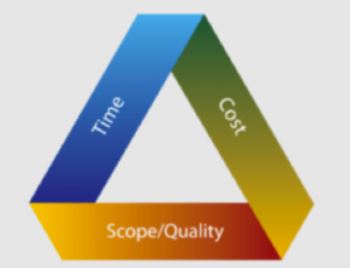 The final (pre-election) article in my series covering my election run for city councilor of Ward 4 in Welland, Ontario shares some of the key risks I’ve identified with this project and how I’m responding to them.
The final (pre-election) article in my series covering my election run for city councilor of Ward 4 in Welland, Ontario shares some of the key risks I’ve identified with this project and how I’m responding to them.
In general, most projects will have two broad categories of risks – those which relate to the delivery of the project itself and those which relate to the outcomes from the project. Delivery risks will affect the ability of the team to complete the project within normal constraints such as scope, schedule, cost, quality and team member availability. Outcome risks will impact the realization of expected benefits.
For each category, I will provide the key risks I’ve identified, their qualitative impact and likelihood of realization and the risk responses I’ve implemented or plan to implement.
Delivery Risks
Increased costs due to inflation or increased demand might cause the project to exceed its approved budget. The impact of the risk is high and the probability is moderate given the current economic conditions. I am attempting to mitigate this risk by identifying multiple suppliers for the products and services I’ll be procuring to ensure I’m getting good prices and will reduce its impact (if the risk is realized) by cutting back on what I will be purchasing.
Another risk related to products and services is that supply chain delays might increase the likelihood of not receiving procured items on time before the election date. The impact of this risk is high but the probability is low as the items being procured are readily available. The same response as in the previous risk will address this risk.
Given the large number of bylaws and regulations related to the election, there is a chance that I or one of the volunteers supporting my campaign might break one of the rules resulting in fines, disqualification from the election or other penalties. The likelihood of occurrence is moderate and the impact would be high. My mitigation risk response has been to thoroughly study all the official election documentation and to seek clarification from election officials whenever I run into a scenario which is not explicitly permitted or prohibited.
Ward 4 has over 6500 residents (as per the previous 2018 election data). I’m planning to go door-to-door introducing myself to homeowners on a number of the main streets within the ward in early September once the start date for posting lawn signs has passed. I’m not planning to visit any given house more than once. As such, there is a risk that if a large number of residents are not home when I visit, the effectiveness of this activity will be reduced. The impact is high but the probability is low given both the demographics of the city and kids will be back to school which means fewer families would be out of town on vacation. I will try to reduce the likelihood of occurrence by concentrating my visits in the early evening and on weekends.
Outcome Risks
Given that under 35% of the eligible voters participated in the last municipal election, there is a high probability, high impact risk that even if I am successful in creating sufficient awareness about myself, sufficiently few residents will turn out to vote which could favor the incumbents more than a newcomer. To mitigate the likelihood of this risk being realized, a key component of my campaign is to raise awareness about the upcoming election and to encourage residents to vote.
Finally, there is the risk that in spite of my campaign, I might get insufficient votes to be one of the two winners in my ward. The impact would, of course, be high and the likelihood of realization is moderate. My entire campaign is a response to address this risk so hopefully it will be successful!
(If you liked this article, why not pick up my book Easy in Theory, Difficult in Practice which contains 100 other lessons on project leadership? It’s available on Amazon.com and on Amazon.ca as well as a number of other online book stores)


 Last year I wrote
Last year I wrote 


